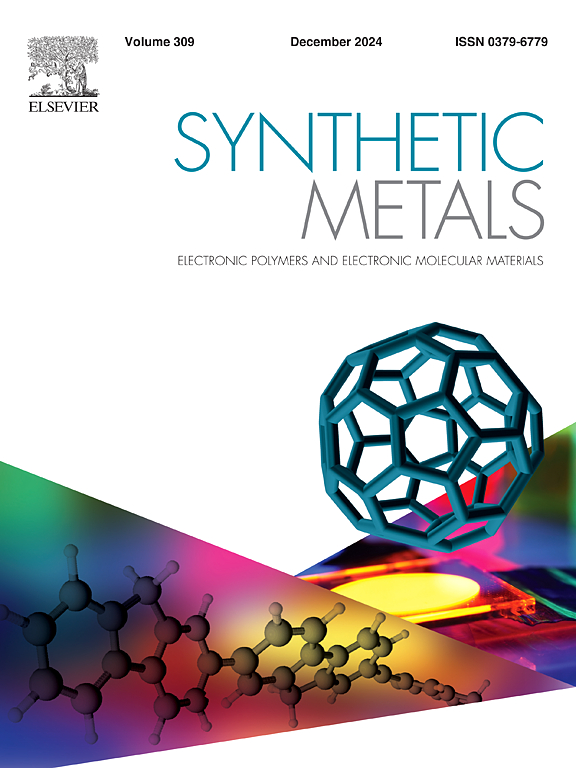Polypyrrole/silver/graphene ternary composites for high-performance Ku-band electromagnetic interference shielding
IF 4.6
3区 材料科学
Q2 MATERIALS SCIENCE, MULTIDISCIPLINARY
引用次数: 0
Abstract
Unwanted electromagnetic waves can significantly affect the performance of electronic devices and communication systems. A high-performance electromagnetic interference shielding (EMI) material is a solution to this issue. This study introduces a cost-effective one-pot synthesis method for polypyrrole/silver (Ppy/Ag), polypyrrole/graphene (Ppy/Gr) and polypyrrole/silver/graphene (Ppy/Ag/Gr) ternary composites with adjustable graphene concentrations. Detailed structural and morphological analyses using FTIR, XRD and STEM confirm the successful incorporation of Ag nanoparticles and graphene into the polypyrrole matrix. The total shielding effectiveness (SET) of the ternary composites in the Ku band shows an impressive 30.86 dB at 12.7 GHz for the 5 wt.% graphene composite, primarily driven by absorption mechanisms (SEA> SER). The synergistic interaction between Ag, which provides conductive pathways, and graphene, which offers structural reinforcement, significantly enhances interfacial polarisation and conductivity, surpassing the performance of binary counterparts (Ppy/Ag and Ppy/Gr. The results of this work introduce a lightweight, potent and economical composite material for EMI shielding applications in the Ku band.
高性能ku波段电磁干扰屏蔽用聚吡咯/银/石墨烯三元复合材料
无用的电磁波会严重影响电子设备和通信系统的性能。一种高性能的电磁干扰屏蔽(EMI)材料是解决这一问题的方法。本研究介绍了一种具有成本效益的一锅法合成聚吡咯/银(Ppy/Ag)、聚吡咯/石墨烯(Ppy/Gr)和聚吡咯/银/石墨烯(Ppy/Ag/Gr)三元复合材料,石墨烯浓度可调。利用FTIR、XRD和STEM进行详细的结构和形态分析,证实了银纳米颗粒和石墨烯成功地结合到聚吡咯基体中。三元复合材料在Ku波段的总屏蔽效能(SET)在5 wt的12.7 GHz处显示出令人印象深刻的30.86 dB。%石墨烯复合材料,主要由吸收机制驱动(SEA>;SER)。提供导电途径的银和提供结构增强的石墨烯之间的协同相互作用显著增强了界面极化和导电性,超过了二元对偶物(Ppy/Ag和Ppy/Gr)的性能。这项工作的结果介绍了一种轻质、高效和经济的复合材料,用于Ku波段的电磁干扰屏蔽应用。
本文章由计算机程序翻译,如有差异,请以英文原文为准。
求助全文
约1分钟内获得全文
求助全文
来源期刊

Synthetic Metals
工程技术-材料科学:综合
CiteScore
8.30
自引率
4.50%
发文量
189
审稿时长
33 days
期刊介绍:
This journal is an international medium for the rapid publication of original research papers, short communications and subject reviews dealing with research on and applications of electronic polymers and electronic molecular materials including novel carbon architectures. These functional materials have the properties of metals, semiconductors or magnets and are distinguishable from elemental and alloy/binary metals, semiconductors and magnets.
 求助内容:
求助内容: 应助结果提醒方式:
应助结果提醒方式:


